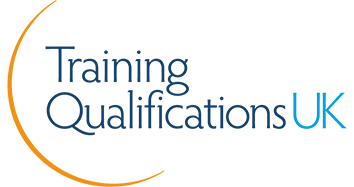Environmental Auditing and Reporting
 90.9%
90.9%
- SALE Savings End Midnight Tuesday 23rd December
- SALE Savings End Midnight Tuesday 23rd December
Environmental Auditing and Reporting
The first session introduces you to the different types of environmental audit, what they aim to achieve, and how they differ from similar activities such as reviews and inspections. It goes on to discuss the benefits and disadvantages of auditing in more detail.
Session Two explores the preparation work that must be carried out by you as a manager responsible for initiating audits (that is, the client). Client responsibilities and activities are listed in paragraph 4.2.4 of ISO 14011. The session begins by discussing the selection of auditors, including making a decision on whether to use members of staff or external auditors. It then considers the importance of reaching agreement with the auditor about the objectives and scope of the audit.
Session Three discusses the activities that the lead auditor must undertake in preparation for the audit. They include the collection of relevant documents, the compilation of checklists of questions, and the drawing up of an audit specification. Depending on the size of your organisation, you may be required to take on the role of lead auditor. Even if this is not the case, as an environmental manager you will need to know what is involved in planning an audit so that you can give the necessary support and assistance to the lead auditor.
Session Four offers guidance on carrying out the audit, including the opening meeting and the methods you, in the role of auditor, should employ when interviewing, making observations and note-taking.
Session Five explores methods available to evaluate the audit findings and present them to the management of the organisation. It discusses both oral reporting, as in the closing meeting, and written reporting, as in the audit report.
Organisations are finding that communicating with their stakeholders about environmental performance is becoming increasingly important as more people and organisations become interested in the environment. This sixth session looks at the different types of environmental reports available, the reasoning behind publishing them, what they should contain and how they should be compiled to suit different audiences.
Modules
Introduction to Environmental Auditing
1.1 What is environmental auditing?
1.2 Types of audit
1.3 Environmental management system audits
Pre-audit Activities for the Manager
2.1 Selecting the audit team
2.2 Planning the audit
Pre-audit Activities for the Auditor
3.1 Drawing up the audit specification
3.2 Obtaining information before the audit
3.3 Checklists
Conducting the Audit
4.1 The opening meeting
4.2 Evaluation of the EMS
4.3 Interviewing
4.4 Site tour and observations
Evaluating the Audit Results
5.1 Evaluation of the audit results
5.2 The closing meeting
5.3 Recommendations
5.4 The audit report
Environmental Reporting
6.1 Purpose of producing an environmental report
6.2 Writing the report
6.3 Independent validation
For a more detailed syllabus on this course, click here
Entry Requirements
There is no experience or previous qualifications required for enrolment on this course. It is available to all students, of all academic backgrounds.
All course fees, inclusive of all payment plans including our Premium Credit Limited option, must be settled before certification can be ordered.
*You will have access to the course for 24 months.

Assessment Method
After each lesson there will be a question paper, which needs to be completed and submitted to your personal tutor for marking. This method of continual assessment ensures that your personal tutor can consistently monitor your progress and provide you with assistance throughout the duration of the course.
On successful completion of your course you will receive the learndirect Certificate of Completion of Training in Environmental Auditing and Reporting.
Your course certificate will also state the number of CPD points/hours the course is eligible for.
View a sample of the certificate (opens in new window)
learndirect is one of the largest integrated providers of courses and qualifications, training, and employment services in the UK
- Each year around 6,000 businesses equip their staff for success with learndirect
- learndirect have helped more than 75,000 businesses equip their employees with the skills needed to improve productivity.
- Almost 700,000 maths and English test passes have been achieved with learndirect.
- 300,000 people fulfilled their career ambitions last year with learndirect.
- Over 250,000 apprentices have achieved with learndirect.
- SALE Savings End Midnight Tuesday 23rd December
- SALE Savings End Midnight Tuesday 23rd December
Environmental Auditing and Reporting
The first session introduces you to the different types of environmental audit, what they aim to achieve, and how they differ from similar activities such as reviews and inspections. It goes on to discuss the benefits and disadvantages of auditing in more detail.
Session Two explores the preparation work that must be carried out by you as a manager responsible for initiating audits (that is, the client). Client responsibilities and activities are listed in paragraph 4.2.4 of ISO 14011. The session begins by discussing the selection of auditors, including making a decision on whether to use members of staff or external auditors. It then considers the importance of reaching agreement with the auditor about the objectives and scope of the audit.
Session Three discusses the activities that the lead auditor must undertake in preparation for the audit. They include the collection of relevant documents, the compilation of checklists of questions, and the drawing up of an audit specification. Depending on the size of your organisation, you may be required to take on the role of lead auditor. Even if this is not the case, as an environmental manager you will need to know what is involved in planning an audit so that you can give the necessary support and assistance to the lead auditor.
Session Four offers guidance on carrying out the audit, including the opening meeting and the methods you, in the role of auditor, should employ when interviewing, making observations and note-taking.
Session Five explores methods available to evaluate the audit findings and present them to the management of the organisation. It discusses both oral reporting, as in the closing meeting, and written reporting, as in the audit report.
Organisations are finding that communicating with their stakeholders about environmental performance is becoming increasingly important as more people and organisations become interested in the environment. This sixth session looks at the different types of environmental reports available, the reasoning behind publishing them, what they should contain and how they should be compiled to suit different audiences.
Modules
Introduction to Environmental Auditing
1.1 What is environmental auditing?
1.2 Types of audit
1.3 Environmental management system audits
Pre-audit Activities for the Manager
2.1 Selecting the audit team
2.2 Planning the audit
Pre-audit Activities for the Auditor
3.1 Drawing up the audit specification
3.2 Obtaining information before the audit
3.3 Checklists
Conducting the Audit
4.1 The opening meeting
4.2 Evaluation of the EMS
4.3 Interviewing
4.4 Site tour and observations
Evaluating the Audit Results
5.1 Evaluation of the audit results
5.2 The closing meeting
5.3 Recommendations
5.4 The audit report
Environmental Reporting
6.1 Purpose of producing an environmental report
6.2 Writing the report
6.3 Independent validation
For a more detailed syllabus on this course, click here
Entry Requirements
There is no experience or previous qualifications required for enrolment on this course. It is available to all students, of all academic backgrounds.
All course fees, inclusive of all payment plans including our Premium Credit Limited option, must be settled before certification can be ordered.
*You will have access to the course for 24 months.

Assessment
Assessment Method
After each lesson there will be a question paper, which needs to be completed and submitted to your personal tutor for marking. This method of continual assessment ensures that your personal tutor can consistently monitor your progress and provide you with assistance throughout the duration of the course.
Qualifications
On successful completion of your course you will receive the learndirect Certificate of Completion of Training in Environmental Auditing and Reporting.
Your course certificate will also state the number of CPD points/hours the course is eligible for.
View a sample of the certificate (opens in new window)
learndirect is one of the largest integrated providers of courses and qualifications, training, and employment services in the UK
- Each year around 6,000 businesses equip their staff for success with learndirect
- learndirect have helped more than 75,000 businesses equip their employees with the skills needed to improve productivity.
- Almost 700,000 maths and English test passes have been achieved with learndirect.
- 300,000 people fulfilled their career ambitions last year with learndirect.
- Over 250,000 apprentices have achieved with learndirect.
 90.9%
90.9%
learning
learning hours





















 If you find this course cheaper anywhere
If you find this course cheaper anywhere

